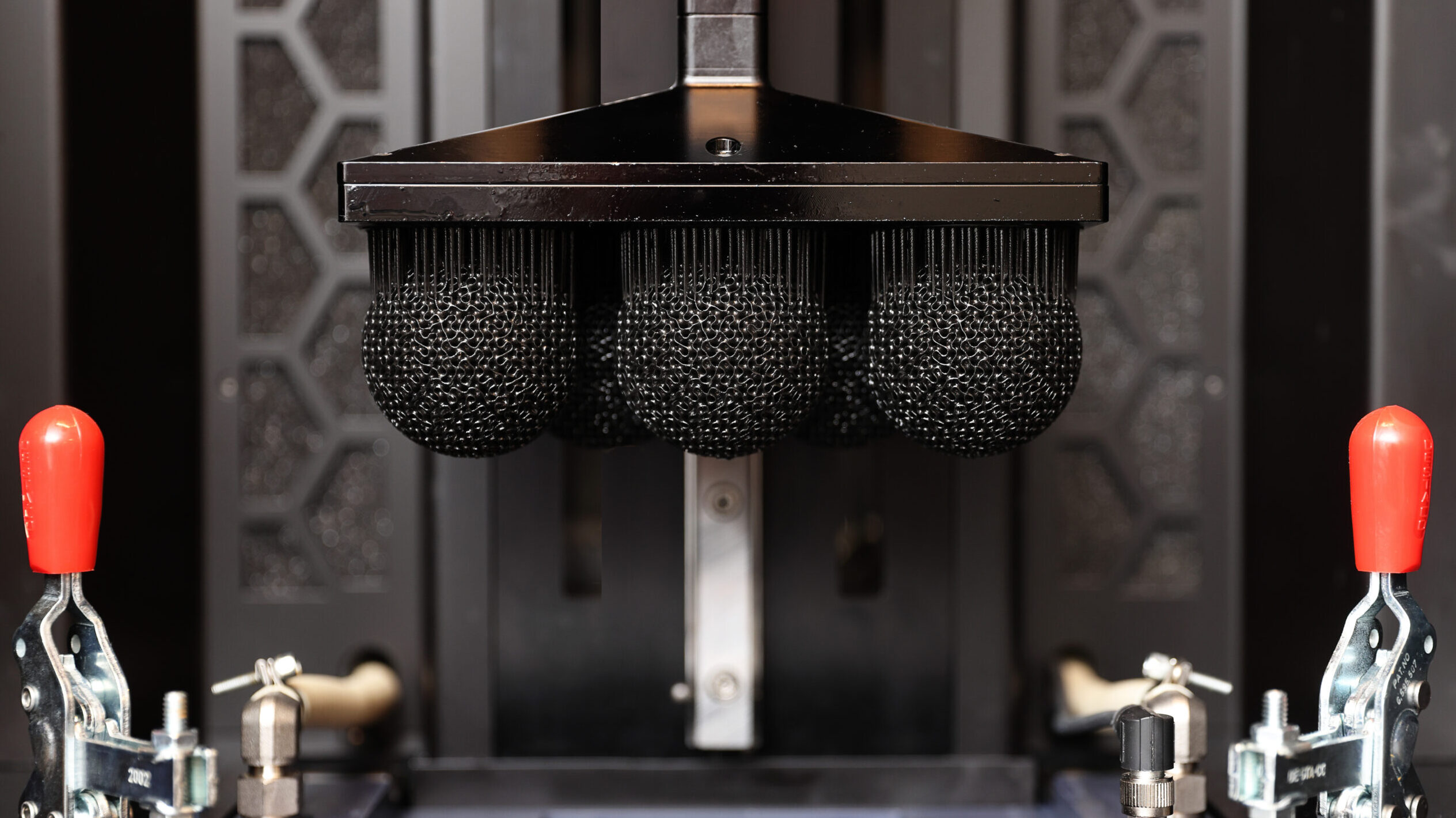
Production of Luneburg lenses (photo courtesy of 3D Fortify, Inc)
WASHINGTON — In 2016, a grad student at Northeastern named Josh Martin had a eureka about using 3D printers to make shapes out of photopolymer composites — a material so hard to work with that it just jammed traditional printers.
Seven years later, what began as Martin’s PhD project has grown into a Boston-based company called Fortify, with 55 employees (mostly other young engineers), annual revenue tripling from $3 million last year to almost $10 million this year, 50 clients including the Department of Energy, and, as of this morning, $12.5 million in the bank from the venture-capital arms of defense giants Lockheed Martin and Raytheon.
“The money’s in the account already,” CEO Lawrence Ganti told Breaking Defense. Ganti, a veteran of high-tech startups from the AI industry to Project Warp Speed, was brought on last year to manage the growing company and let the founders focus on the science.
The science seems to be working well enough to drive Lockheed and Raytheon from Fortis’s biggest clients to investors. “[When] most companies enter the 3D printing space, their focus has always been on the printer: how cool the printer is, how fancy the printer is,” Ganti said. “We were focused on the materials.
“We are working with each business unit of both Raytheon and Lockheed…whether it’s radar missile guidance, whether it is the fighter jets, whether it’s UAVs, we’re working with all of them,” he said. “We’re working on hypersonic stuff. We’re working on fighter jet things… We are working with a number of three-letter organizations with the US government.” (Unsurprisingly, he isn’t allowed to name those clients.)
“The great thing about composites is that they’re widely used, you can put them into more intricate shapes [than other materials], and there’s typically not the same kind of supply chain challenges as you would get with, maybe, steel,” he explained. “[But] they’re not used in certain applications because they break.”
Martin’s research focused on two questions: “How do we make these cool plastics but make them stronger?” Ganti said. “How do you make this into faster, better, more complicated shapes? Oh, we can use a 3D printer. [But] how come 3D printers weren’t used in the past? Because, typically, these high-performance composite materials are like molasses, too sludgy. They’re very, very thick, and they jam up these printers.” (Additive manufacturing requires materials be reduced to liquid or powder so the 3D printer can extrude them in the desired shapes).
“No one’s been able to make that work,” he said — until Martin and his team figured out how to keep the liquified composite flowing with a (proprietary) combination of heat, stirring, and shaking, as well as mixing in metallic fibers for extra strength and aligning them with magnetic fields. This process allows them to extrude a wide variety of complex shapes that are both lightweight and strong, Ganti boasted, from antennas to the alien-looking black, pitted spheres known as Luneburg lenses, used in everything from radars to lasers.
Navy jet trainer fleet operations remain paused after engine mishap
One week after the incident, a Navy spokesperson says the service is continuing to assess the fleet’s ability to safely resume flight.


























